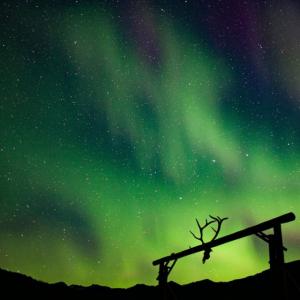
Photo by Michael Christopher Brown @michaelchristopherbrown | Northern lights wiggle around the sky above a corral at a hunting outfitter camp in British Columbia, Canada. #northernlights #canada#britishcolumbia
7万258
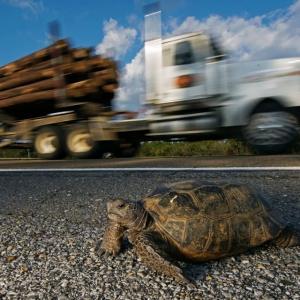
Photo by Joel Sartore @joelsartore | Gopher tortoises face a potentially deadly journey when they cross busy highways, so please slow down in known tortoise areas. The creatures play a key role in helping other species survive; the burrows dug by this reptile act as shelter for an assortment of animals native to the southern U.S. They are listed as federally threatened and also as vulnerable by the IUCN, but collisions with vehicles are a leading cause of death for the gopher tortoise, which often must cross roadways in order to forage, find a mate, or dig a new burrow. To see a shot of this species in the Photo Ark follow me, @joelsartore. #tortoise#gophertortoise #highway#photoark
15万719
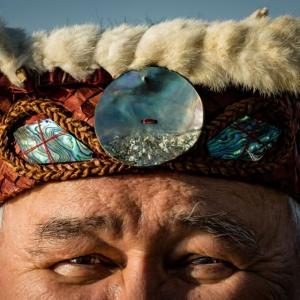
Photo by Cristina Mittermeier @cristinamittermeier | “When the tide is out, the table is set.” Those are words Hereditary Chief Bill Cranmer of the ‘Namgis First Nation used to hear a lot. Now they’re just an echo of a more sustainable past: In 2009 the open-net Atlantic fish farms were destroying the wild salmon runs his people have depended on for thousands of years. He went on record as saying, “It’s a lot worse than people think.” Nine years later, after endless court proceedings, protests, and a heroic 280-day occupation of the farms, the open nets are finally being removed from the once pristine Broughton Archipelago of British Columbia, and the wild salmon might return. Chief Cranmer is an advocate of land-based fish farms and was a leader in the opening of Kuterra, an on-land alternative to open-net farms. #FollowMe at @CristinaMittermeier for more portraits and stories of people from around the world. #GetFishFarmsOut#BritishColumbia #sustainability#ocean
9万273
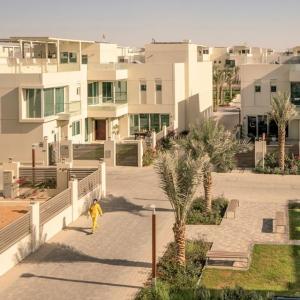
Photo by Luca Locatelli @lucalocatelliphoto | On Dubai’s southern outskirts, a new housing development has opened—called Sustainable City—that recycles its water and waste and produces more energy than it consumes thanks to solar panels that shade roof terraces and parking lots. Building orientation was a critical design choice at the Sustainable City, where homes face north and shade each other. A decade ago Dubai had one of the largest ecological footprints of any city in the world. By 2050 it says it wants to have the smallest. Can it get there? My work revolves around the making of the future, how our society transitions through new ways of living, and how technology is changing our approach to the environment and to our cities. Follow me @lucalocatelliphoto to find out more about the Dubai story I covered for @natgeo#Dubai #environment#architecture #sustainability#people
17万647

Photo by Stephen Alvarez @salvarezphoto | Ahu Tongariki is the largest and best known ceremonial platform on Rapa Nui (Easter Island). I’ve had the good fortune to witness sunrise there many times in my photographic career. Rain or shine, it never disappoints. The ahu was destroyed by a 1960 Chilean tsunami and restored 30 years later by a Chilean team, led by @insidenatgeo grantees Patricia Vargas Casanova and Claudio Cristino-Ferrando. For more images from around the world follow me @salvarezphoto#rapanui #easterisland
23万677
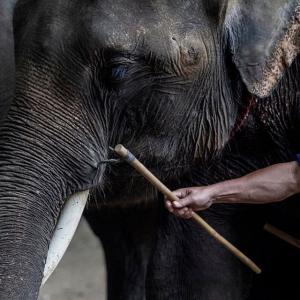
Photos by Kirsten Luce @kirstenluce | Scenes from Maetaman Elephant Camp in Chiang Mai, Thailand. Here we witnessed liberal use of bullhooks during and after performances and during elephant rides. We also met a four-year-old female elephant named Meena that was kept on a spiked ankle chain. Her handler (mahout) uses a nail pressed into her face to guide her while she paints pictures for tourists. This location is particularly interesting because the owners also run a new outfit called “Elephant Eco Valley,” a lush green area where a handful of elephants roam free and visitors observe them from raised boardwalks. It’s a more expensive experience and is typically marketed to ethically-conscious tourists. There are no rides offered or bullhooks visibly used. However, visitors have no idea that the very same elephants also work next door at Maetaman Elephant Camp. For the June 2019 issue, writer @natashaldaly and I traveled the world to learn about wildlife tourism and the suffering that goes on behind the scenes. Our intention is not to shame tourists who have had these encounters but to arm our readers with information that will help them identify potentially abusive situations for animals. To learn more, read the story at natgeo.com/wildlifetourism and follow @world_animal_protection, a nonprofit that works to raise help animals in the tourism industry.
62万1万
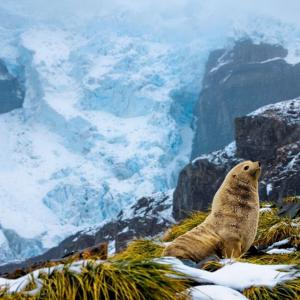
Photo by Paul Nicklen @PaulNicklen | An Antarctic fur seal relaxes atop a cliff overlooking the Subantarctic landscape of South Georgia. Having reached shore after a winter spent at sea, this seal arrived with the intention to breed among the thousands of seals that inhabit the island’s beaches. Although the species was once in severe danger from overhunting, their population has rebounded significantly in recent years, with their numbers now likely in the millions. #FollowMeat @PaulNicklen for more photos of wildlife from around the world. #furseal #SouthGeorgia#conservation #ocean
34万887
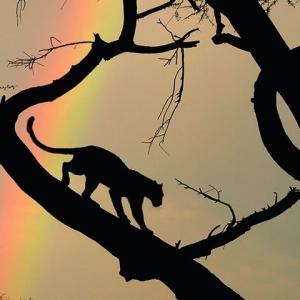
Photo by Beverly Joubert @beverlyjoubert | A stark but unmistakably feline silhouette is set against a colorful sky of rain. I always think it is lucky to see a leopard; with their phenomenal talent for disappearing in plain sight, it’s entirely up to them whether or not they’ll show themselves. Finding a leopard at the end of a rainbow must be especially lucky. Their luck in living with us, however, is running out. Leopards have lost 75% of their historical range, and while they are incredibly adaptable, there’s only so far that they can conform when their prey is less adaptable and the pressures from our activities are only increasing. In order to protect big cats like this, we need to conserve at least 30% of the planet by 2030. #CampaignforNature#ThisIsMytrophy #Leopard#BigCats
60万1千
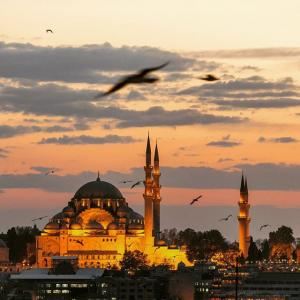
Photo by Ira Block @irablockphoto | Süleymaniye Mosque lit up at night in Istanbul, Turkey. This Ottoman Empire Mosque is the second largest mosque in Istanbul. It was built in the mid sixteenth century under Sultan Süleyman #followme@irablockphoto for travel imagery and stories. #istanbul#mosque # religion
56万2千
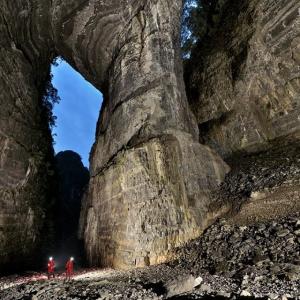
Photo by Robbie Shone @shonephoto | As evening descends upon the outside world, two cave explorers enter Er Long Dong and begin a long journey through the cave to the gigantic chamber known as Cloud Ladder Hall. This is one of three known tunnels into the cave leading to the big hall, but probably the easiest to negotiate.
19万488
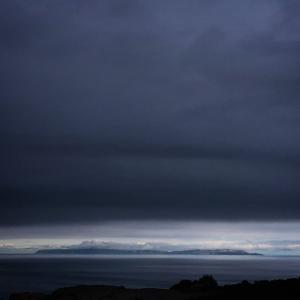
Photo by Ivan Kashinsky @ivankphoto | Santa Catalina Island is seen from the Santa Monica Mountains, in California, at dusk. The Native Americans who first settled there called it Pimugna or Pimu.
29万678
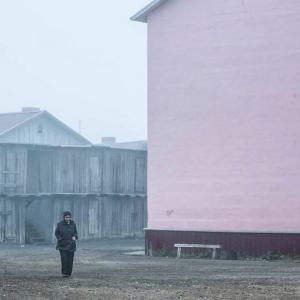
Photo by Pete Muller @pete_k_muller | Waves of seasonal fog blanket Chukotka, Russia, for days on end, canceling both sea- hunting ventures and flights out. After a month here, I’m eager to move along. In the early morning hours, which in the Arctic remain brightly lit at summer’s end, I awake to survey the weather conditions. At 3 a.m., I stand rubbing my eyes before the large window in the bedroom of our rented apartment. It’s clear and calm. By 8 a.m., hours before the sole flight out departs, the fog reliably arrives and the flight is delayed another day. I’m frustrated and discouraged. If I’m honest, I find photography to be very difficult, both creatively and psychologically. For many years I’ve had to fight against how daunting I find it. I have to remind myself that photographs almost never happen in the hotel room. Sometimes it feels like simply getting out the door is the hardest part. And so on this particular day, at the end of my tether, I wandered in the fog.
16万378
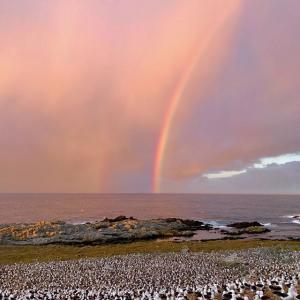
Photo by Stephen Wilkes @stephenwilkes | The archipelago that makes up the Falkland Islands, or the Islas Malvinas, is made up of 750 islands. The natural landscape of this location leaves one with a profound sense of awe, and I felt so fortunate to be able to photograph the albatross birds in such close proximity. I remember this scene unfolding in front of me, and the saturated sunrise of the sky illuminating this large colony felt surreal. It’s said that a double rainbow symbolizes future success, and the result of this “Day to Night” shoot and all the remarkable beauty I experienced from morning to night here speaks to this idea. To see more photos from my travels near and far, follow me @stephenwilkes. #DayToNight#StephenWilkes#DoubleRainbow #Falklands#Albatross
2千

Photo by Keith Ladzinski @ladzinski | A horse curiously comes in for a wide-angle hello in the heart of #TorresDelPaine, Chile. Horses are an intricate part of ranching life to the gaucho of Patagonia, a bond that goes back centuries. This part of the planet is one of extremes, where weather turns on a dime and the forecast is better determined by simply looking outside rather than seeing what the radar says. Horses are remarkably sturdy here in this place of polarized fluctuations, be it in the green pastures of summer or the icy meadows of winter. To see more photos of this part of the world, please visit @ladzinski
1千
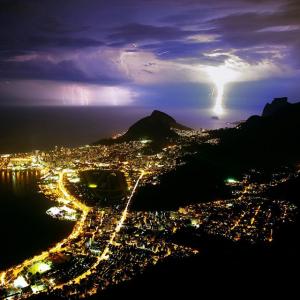
Photo by Babak Tafreshi @babaktafreshi | A superbolt strikes the Atlantic Ocean off the coast of Rio de Janeiro. A superbolt is about a hundred times brighter than normal lightning bolts. One of every million lightning strikes on Earth is a superbolt. This view looks over the Gavea area, with Rodrigo de Freitas Lagoon on the left. Explore more of the world at night photography @babaktafreshi. #weather#storm #lightning #riodejaneiro
3千
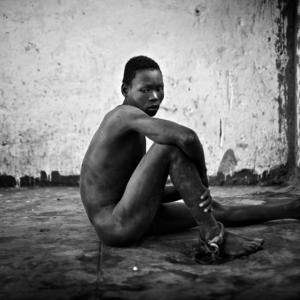
Photo by Robin Hammond @Hammond_Robin | “What happens to people with mental health conditions?” I asked the driver. “We put them in prison,” he said. An hour later I was in a dark cell in Juba Central Prison, South Sudan. Some inmates spoke to me, some to voices only they heard. Many didn’t speak at all, keeping to themselves and to the dark concrete corners that had become their world. I noticed a young man who neither looked at nor spoke to me. He was completely naked except for a shackle at his ankle. I had to take his picture, I thought. But as I was about to, I caught myself. I wasn’t sure if it was right. If this was me, my brother, my son, would I be okay with this image appearing on the front page of a newspaper? With this question, Condemned —my documentation of mental health in countries in crisis—began. It started with this young man and a promise. I’m sharing this now because May is mental health awareness month. To see more and read about that promise I made follow @onedayinmyworld
5千
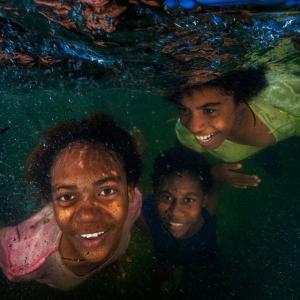
Photo by Jennifer Hayes @JenniferHayesIG | A group of young girls followed me into the sea to watch me photograph the coral off Lababia Island, Papua New Guinea. The girls were remarkable swimmers, able to breath-hold far longer than I could, leading to great laughter among the three of them. After we left the water, we sat on the beach and looked at images in the back of the camera. They chose this picture as their favorite. In my travels to remote corners of the ocean, I often watch young boys leading the the way into the sea. It was wonderful to see the girls enter the sea with the full confidence and capability of their brothers. With @natgeo inside the #CoralTriangle#EqualInTheOcean #Ocean#WomenInTheSea for#MoreOcean follow @JenniferHayesIG
1千
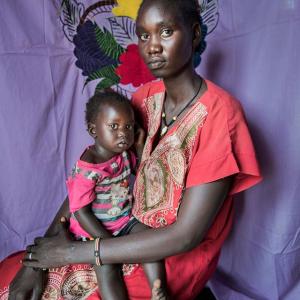
Photo by Nora Lorek @noralorek| Not long after Angelina Nyakum came to Uganda in the summer of 2016, her husband was killed in South Sudan. He had been walking past a street fight. In Bidibidi refugee camp, 27-year-old Angelina is left to care for their children. “They don’t believe me that their father is dead,” she says. “They still ask to call him all the time.” What began as a @natgeo assignment is now the @milayaproject, a nonprofit we just launched on Kickstarter to connect customers with South Sudanese women making hand-embroidered pillowcases, bedspreads, and wall hangings, like those seen in the background. The civil war in South Sudan has displaced two million people. When refugees arrived to Uganda they carried their only possessions wrapped in milayas, embroidered sheets passed down for generations. Today in Bidibidi, the second largest refugee camp in the world, milayas are being sewn but there are few customers. Through the Milaya Project these women will be able to sell their art and transform their collectives into self-sufficient businesses. Follow @milayaproject for more information on how to support these women.
1千
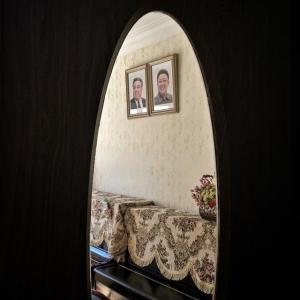
Photo by David Guttenfelder @dguttenfelder | Portraits of the late leaders of North Korea, Kim Il Sung and Kim Jong Il, hang above frilly cloth-covered pianos at Pyongyang Kyongsang Kindergarten. Across the country, images, pins, mosaics, and monuments of the two late leaders, who died in 1994 and 2011, are ubiquitous. Please follow me, @dguttenfelder, for an inside look at North Korea, where I have been traveling and photographing for the past 19 years.
598
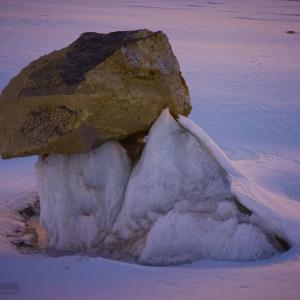
Photo by Simon Norfolk @simonnorfolkstudio I A glacier table: a boulder perched on a pedestal of ice. Photographed on assignment during an ascent to the Chhota Shigri Glacier, Himachal Pradesh, Indian Himalaya. The boulder protects the ice from ablation during sunny weather. Around the boulder, the ice surface ablates while the boulder remains at the original level. As the pedestal becomes higher and higher in relation to the glacier’s surface, the sun shines further under the boulder from the south. Consequently the pedestal gets ablated on its southern side, and the boulder will eventually fall off the pedestal. After this, a new cycle of table growth and destruction may begin. Follow me @simonnorfolkstudio for updates, outtakes, unpublished, and archive material on this and future projects.#photojournalism#documentaryphotography#simonnorfolk #ice#climatechange
557

Photo by @nicholesobecki | A health worker carries Kakule Kavendivwa, 14, to a waiting ambulance in Beni, Democratic Republic of Congo. The day before Kakule’s sisters had taken him to a nearby health center, but fled when the team encouraged them to go to an Ebola treatment center. The health center alerted the World Health Organization who found the family. After several hours of talking with community outreach workers, they allowed an ambulance to take him for treatment. “People need to have a chance to talk,” Zoe Kyavaghendi, a risk communication officer told me as we waited for Kakule’s sisters to consider their options. “You can’t force them right away, you need to give them a chance to express their fears, and then to explain afterwards.” To learn more about the ongoing Ebola outbreak — already the second largest in history, and the first in an active war zone — take a look at our story “Life amid an Ebola outbreak: Combating mistrust—and saving lives.” Link in bio @nicholesobecki #ebola #drc#health #epidemic
534

Photo by Michael Christopher Brown @michaelchristopherbrown | Young girls walk in a light breeze at sunset outside their home overlooking the city of Kabul, Afghanistan.
470

Photo by Carlton Ward, Jr. @carltonward | A herd of endangered desert elephants makes its way through a scrubby acacia forest around the edge of Lake Banzena in the Sahel of Mali. Early in my career, I spent two months tracking and photographing these elephants with @savetheelephants and @wildfoundation. The project taught me about the importance of protecting large connected landscapes for wildlife and people—and inspired much of my thinking at the heart of the Florida Wildlife Corridor campaign (@FL_WildCorridor).The Mali elephants also deepened my respect for the power of nature. These elephants, unaccustomed to vehicles, required us to approach them only on foot. Looking up from the desert floor at this towering herd made me feel both very alive and very small. It’s hard to believe an animal as powerful as an elephant is also so vulnerable and endangered. For more conservation photography please follow @carltonward.#mali #elephants #sahel#migration #corridor
863

Photo by @nicholesobecki | Portrait of Ebola survivor Aisha Ramzani Djadi, 17, in the bedroom of her home in Beni, Democratic Republic of Congo. When she first became ill, Aisha was pregnant and she lost the baby during her treatment. She is just one of many in this central African nation caught between the promise of new anti-Ebola measures and the barriers to their success: widespread fear, mistrust of foreign-run medical relief efforts, and general unrest fed by armed militias, poverty, and despair. As she works to rebuild her life in the wake of great loss, Aisha has returned to care for others fighting the virus at the Ebola Treatment Center in Beni. “I’d like to have more children in the future,” she told me, a nearby window casting light across her young face within the shadowy room where we stood. #ebola #drc #health#survivor
411

Photo by William Albert Allard @williamalbertallard | This child wearing one of his papa’s hats is the son of John Hand, a rancher living in New Mexico back in 1971, when I was wandering the American West, taking photographs for the National Geographic book “The American Cowboy in Life and Legend,” published in 1972. I don’t recall the boy’s name, but he was out in one of the barns where his father was shoeing a horse, and I found making portraits of the little boy more productive than watching the horse. This is a full, in-your-face portrait showing the boy’s soft, smooth skin and dark, pool-like eyes, all accented by the piece of alfalfa clamped in his mouth. His father was a wonderful, highly respected rancher, and I’d like to think the little boy grew up to be the same, but I can’t say for sure. For more images of the American West and other assignments spanning a five-decade career, follow me @williamalbertallard
1千

Photo by Cristina Mittermeier @CristinaMittermeier | The Rio Pequeno, a tributary of the Iriri in the southern Amazon, was filled with giggles as this group of Kayapo girls played tagalong on its shallow bank. Indigenous communities that directly depend on their natural surroundings for survival develop a unique and intimate relationship with nature. From a young age, these children are raised to believe that if they treat the forest, river, and wildlife with respect and gratitude, they will be provided for by nature, and presented with everything they need to sustain themselves. Is there a lesson there for the rest of us? #FollowMe at @CristinaMittermeier for more photos from around the world. #Kayapo #Amazon #nature#community
1千

Photo by Anastasia Taylor-Lind @anastasiatl // Sponsored by @always_brand // Schoolgirls receive free period products at a workshop at Thabotona Primary School in Katlehong, South Africa. Teams of students prepared vision boards detailing their dreams for the future and a nurse taught them about female reproductive organs. // Every day, all over the world, millions of girls miss school because they lack resources to navigate the onset of menstruation. @always_brand provides puberty education & period products to girls around the world to help keep them confident #LikeAGirl& focused on getting an education. Together we can #EndPeriodPoverty!
423

Photo by Anastasia Taylor-Lind @anastasiatl // Sponsored by @always_brand // Schoolgirls attending Thabotona Primary School in South Africa perform a traditional dance. The girls sang and clapped while they took turns dancing in the yard outside a classroom. // Every day, all over the world, millions of girls miss school because they lack resources to navigate the onset of menstruation. @always_brandprovides puberty education & period products to girls around the world to help keep them confident #LikeAGirl & focused on getting an education. Together we can #EndPeriodPoverty!
328

Photo by Anastasia Taylor-Lind @anastasiatl // Sponsored by @always_brand // Amelia sits in her bedroom, which she shares with two sisters and her niece, in Katlehong, South Africa. Amelia is at the top of her class, and she is very confident and motivated. She is just beginning puberty and hasn’t started menstruating, but she is very knowledgeable and feels prepared for it when the time comes. “I want to be a doctor. Your body is yours. This body is mine—nobody owns it,” she said. // Every day, all over the world, millions of girls miss school because they lack resources to navigate the onset of menstruation. @always_brandprovides puberty education & period products to girls around the world to help keep them confident #LikeAGirl & focused on getting an education. Together we can #EndPeriodPoverty!
261

Photo by Anastasia Taylor-Lind @anastasiatl // Sponsored by @always_brand // Boikarabelo lives in Soweto, South Africa. She told me that her favorite subject is math and that she’d like to be a lawyer. “I like to stand for up other people,” she said. Boikarabelo also taught me about the seven B’s: “Books Before Boys, Because Boys Bring Babies.” Her mother, Nomkululeko, didn’t have access to disposable pads when she was growing up and no one educated her about menstruation. At the time, she was unaware that girls could get pregnant after their periods came. // Every day, all over the world, millions of girls miss school because they lack resources to navigate the onset of menstruation. @always_brandprovides puberty education & period products to girls around the world to help keep them confident #LikeAGirl & focused on getting an education. Together we can #EndPeriodPoverty!
475

Photo by Anastasia Taylor-Lind @anastasiatl // Sponsored by @always_brand // On an overcast morning, schoolgirls attending Thabotona Primary School in South Africa perform a traditional dance. Menstruation is a taboo topic in poor South African communities, and girls often start menstruating with little information about what’s happening, leading to fear and a lack of knowledge about how to safely manage their cycles. Teachers in South Africa say they do not always feel it is their role to teach girls about menstruation, nor do they have the skills to do so. The cost of period products proves to be a hindrance for many girls in poor communities, but citizens are trying to overcome that obstacle. In 2010, the ANC Youth League started appealing to the government for free sanitary pads in schools, and the movement gained momentum when then President Zuma promised to expand access to sanitary pads a few months later. Many years have passed, but there is still no federal policy or infrastructure put in place to provide free sanitary pads. // Every day, all over the world, millions of girls miss school because they lack resources to navigate the onset of menstruation. @always_brandprovides puberty education and& period products to girls around the world to help keep them confident #LikeAGirl & focused on getting an education. Together we can #EndPeriodPoverty!
441

Photo by Joel Sartore @joelsartore | It doesn’t take long before you feel as though you’re being transported to another dimension while staring into the eye of this pied mossy frog. A patchwork of ornate textures and patterns helps camouflage it, giving it a unique look that seems out of this world. Follow me, @joelsartore to see more. Photo taken @houstonzoo.#piedmossyfrog #frog#amphibian #eye #textured#photoark
1千